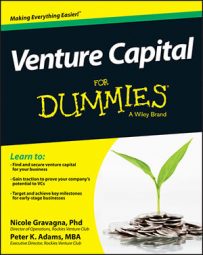With the exit being absolutely critical to the outcome of a venture deal, it’s surprising that entrepreneurs spend so little time thinking about it. From the very beginning, a company should be designed to be attractive to potential acquirers, and that attractiveness should be part of the company’s DNA.
The following outlines some things to consider as you design your exit. As you do so, you need to think about three different customers, each of which want different things:
The people who are buying your product: These are your real customers. These people may be happy about an exit for your company if it means that they can get their products faster, cheaper, or more easily in more locations.
The investor: This is the customer to your investment deal. The investor is happy when you have an exit because this is when she gets her money back.
The acquiring company: This is the final customer who will buy your company down the road. The acquirer is your ultimate “customer” because the acquiring company is buying your company. It’s looking to acquire your company for some strategic reason, such as growth or competitive advantage.
Know your industry to plan your exit
Exits are different in every industry. You must know yours. If you want to impress your VC, make sure you have intimate knowledge of current history of exits in your industry. VCs follow exits very closely and are usually up to date, but they may have fallen behind if your deal is somewhat outside of their normal area of expertise. You can help by researching exits in your area and gathering the following information:
The name of both the acquiring firm and the acquired firm
Total revenues of the acquired firm
EBITDA (earnings before interest, taxes, depreciation, and amortization) of the acquired firm
Acquisition price and date
This information enables you to provide multiples of earnings and revenue that will be helpful in crafting a valuation story. Any additional information, such as the reasons for the acquisition and any strategic advantages that were understood by either side, would also be helpful.
Think about the timing of your exit
Coming into the market too early or too late can cause you to leave money on the table and to miss your best deal. For that reason, timing is an important factor in your exit strategy.
Time is money
The longer your investment takes to pay out for the VC, the lower his return. Developing an exit strategy that happens sooner rather than later can end up looking good for the VC. The VC calculates her deal based on internal rate of return (IRR) which is a combination of how long her investment dollars are at work and how much profit she makes on a particular deal. The faster the VC can get her money back, the higher the IRR is.
Time lets you take advantage of trends
The goal in terms of timing is to spot trends and ride them to gain the greatest exit advantage for your company. You can identify many opportunities by keeping your ear to the ground and your eyes on the distant (five year) horizon — remember you’re on a five year strategy cycle.
Develop strategies early
Many entrepreneurs say that they can’t possibly come up with an exit strategy because the exit is five years away, and too much can happen between then and now. True, things will change, but the solution isn’t to refuse to plan for the future.
Nobody, not even the most cynical VC, expects entrepreneurs to carry out their business plans exactly as written. VCs expect that changes and modifications will occur. This is one reason why VCs put so much stock in their assessment of the management team.
VCs want a team that can pivot quickly when needed and push forward when possible. VCs will tolerate a shift in plans, but they’re typically unimpressed with early-stage companies that have vague and unwritten plans.
By planning early for your exit, you can focus on what acquirers want in a company and then easily build that value in from the start. This approach is far more effective than going in one direction for four and a half years and then having to pivot in the last six months, scrambling to implement what your acquisition targets may want.
If you know at an early stage which companies are likely to be acquiring you, you can begin networking in the circles where those companies are active. Look for events they sponsor and conferences they speak at. By becoming familiar with the decision makers early on, you enhance your chances for serious consideration when the time for your exit comes around.

